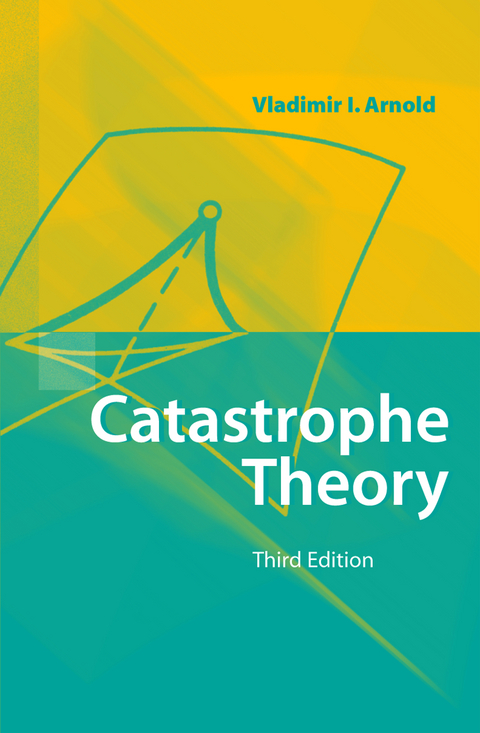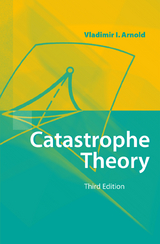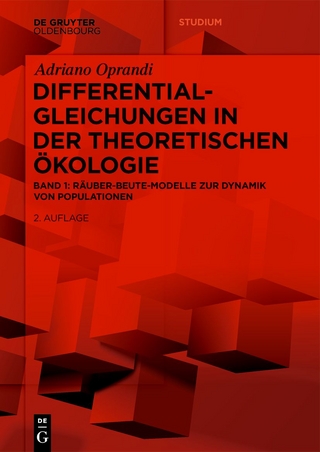Catastrophe Theory
Springer Berlin (Verlag)
978-3-540-54811-9 (ISBN)
In der dritten Auflage dieses bemerkenswerten Buches hat Arnold den Text gründlich überarbeitet und Aufgaben sowie einen Anhang zur Geschichte der Katastrophentheorie hinzugefügt. Arnold bringt seinen Lesern die Ideen der Katastrophentheorie nahe. Dabei setzt er lediglich voraus, daß der Leser bereit ist, sich auf ein mathematisches Abenteuer einzulassen.
This well-known booklet, now in its third, expanded edition, provides an informal survey of applications of singularity theory in a wide range of areas. Although the first few chapters touch briefly (and critically) on theThom-Zeeman catastrophe theory, most of the book is concerned with more recent and less controversial aspects, covering such topics as: bifurcations and stability loss, wavefront propagation, the distribution of matter in the universe, optimization and control problems, visible contours,bypassing an obstacle, symplectic and contact geometry, complex singularities, and the surprising connections between singularities and widely disparate mathematical objects such as regular polyhedra and reflection groups. Readers familiar with the previous editions will find much that is new. Results have been brought up to date, and among the new or expanded topics discussed are delayed loss of stability, cascades of period doublings and triplings, shock waves, implicit differential equationsand folded singularities, interior scattering, and more. Three new sections give an overview of the history of singularity theory and its applications from Leonardo da Vinci to modern times, a discussion of perestroika in terms of the theory of metamorphoses, and a list of 93 problems touching on most of the subject matter in the book. The text is enhanced by fifteen new drawings (there are now 87 in all) and improvements to old ones. The already extensive literature list has been updated and expanded. As a result, the book has been enlarged by almost a third. Arnol'd's goal with this edition remains the same: to explain the essence of the results and applications to readers having a minimal mathematical background. All that he asks, is that the reader have an inquiring mind.
1 Singularities, Bifurcations, and Catastrophes.- 2 Whitney's Singularity Theory.- 3 Applications of Whitney's Theory.- 4 A Catastrophe Machine.- 5 Bifurcations of Equilibrium States.- 6 Loss of Stability of Equilibrium and of Self-Oscillating Modes of Behaviour.- 7 Singularities of the Stability Boundary and the Principle of the Fragility of Good Things.- 8 Caustics, Wave Fronts, and Their Metamorphoses.- 9 The Large-Scale Distribution of Matter in the Universe.- 10 Singularities in Optimization Problems: the Maximum function.- 11 Singularities of the Boundary of Attainability.- 12 Smooth Surfaces and Their Projections.- 13 The Problem of Bypassing an Obstacle.- 14 Symplectic and Contact Geometry.- 15 Complex Singularities.- 16 The Mysticism of Catastrophe Theory.- Appendix The Precursors of Catastrophe Theory.- Conclusion.- Problems.- References.
"This short book, which is a translation from the Russian, provides a concise, non-mathematical review of the less controversial results in catastrophe theory. The author begins by describing the established results in the theory of singularities and bifurcation and continues with chapters on the applications of the theory to topics such as wavefront propagation, the distribution of matter within the universe, and optimisation and control. The presentation is enhanced by numerous diagrams.
... This is a short, critical and non-mathematical review of catastrophe theory which will provide a useful introduction to the subject."
Physics Bulletin December 1984
"Vladimir Arnold is a giant among contemporary mathematicians, and one of the three who stand out in the creation and development of catastrophe theory. ..."
The Times Higher Education Supplement 1 June 1984
"... This is a beautiful little book, popular mathematics at its best, a delight to read and unreservedly recommended to novice and expert alike. ..."
Acta Applicandae Mathematicae Vol. 7, 1986
"... The book can be warmly recommended to everyone who is interested in singularity theory. It also gives interesting information for researchers working on the subject."
Acta Scientiarum Mathematicarum 59, 1994
"... There is probably no one else in the world who could have written this book. It remains an engrossing summary of a vast body of work which is one of the major achievements of twentieth-century mathematics."
Mathematical Reviews, Issue 93h
"This unusual little paperback ... has the qualities we tend to associate with Russian expository mathematical writing: a highly personal style, imaginatevely presented examples, nontechnical language, sometimes puzzling asides, and de trop obersations taken from the world at large. ..."
The Mathematical Intelligencer18.1996.4
| Erscheint lt. Verlag | 22.7.1992 |
|---|---|
| Übersetzer | G.S. Wassermann, R.K. Thomas |
| Zusatzinfo | XIII, 150 p. |
| Verlagsort | Berlin |
| Sprache | englisch |
| Maße | 133 x 203 mm |
| Gewicht | 211 g |
| Themenwelt | Mathematik / Informatik ► Mathematik ► Analysis |
| Mathematik / Informatik ► Mathematik ► Geometrie / Topologie | |
| Naturwissenschaften ► Physik / Astronomie | |
| Schlagworte | Bifurcations • Catastrophe Theory • differential equation • Katastrophe (Math.) • Katastrophentheorie • Maximum • Minimum • Optimierungsprobleme • Optimization Problems • Singularitäten • Singularities • Verzweigung |
| ISBN-10 | 3-540-54811-4 / 3540548114 |
| ISBN-13 | 978-3-540-54811-9 / 9783540548119 |
| Zustand | Neuware |
| Haben Sie eine Frage zum Produkt? |
aus dem Bereich




